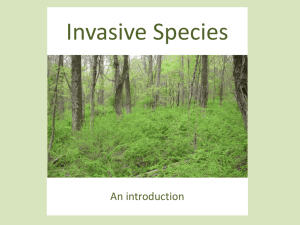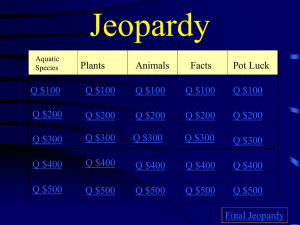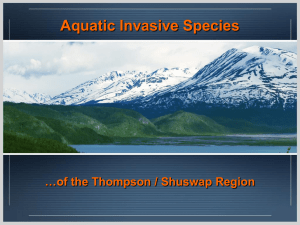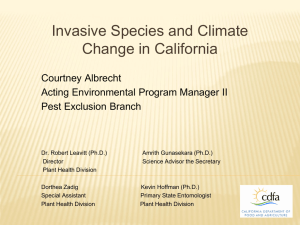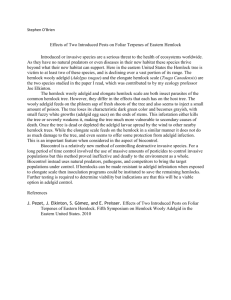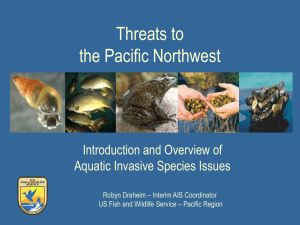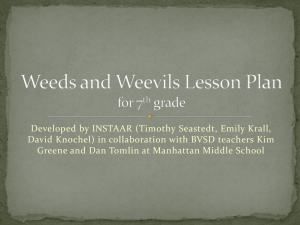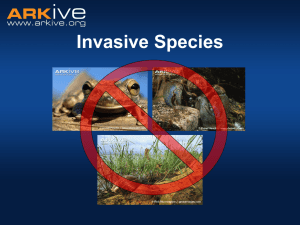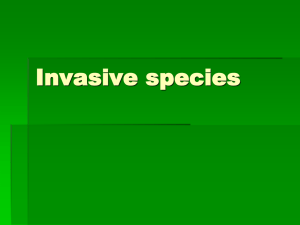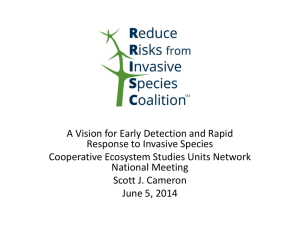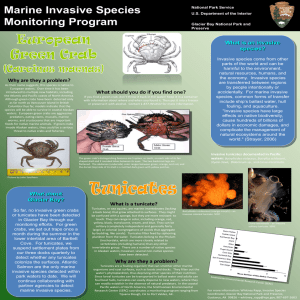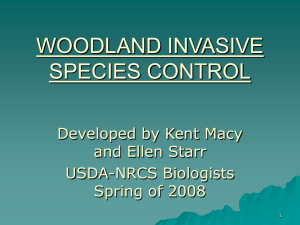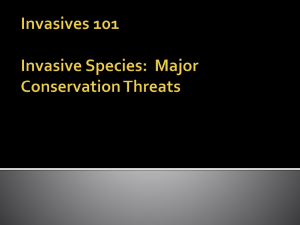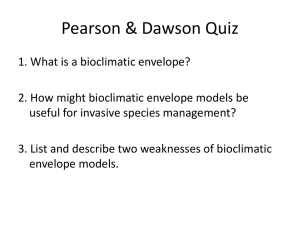Invasive species PowerPoint Presentation
advertisement
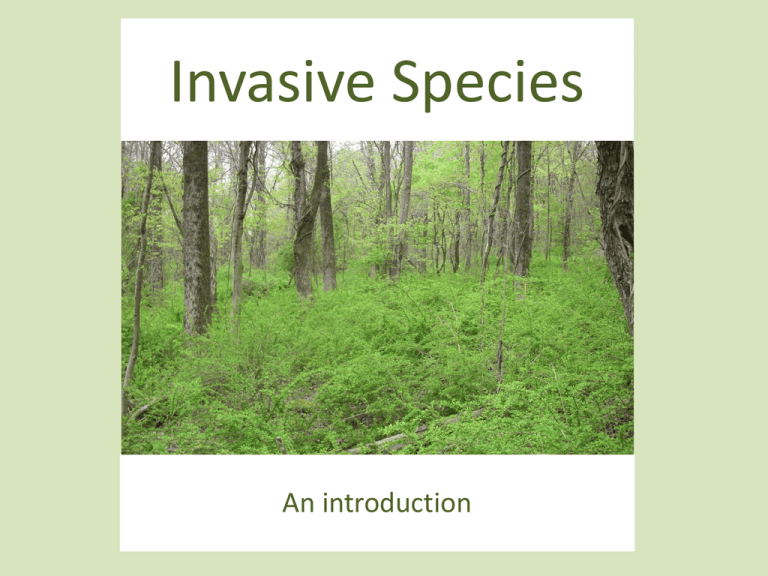
Invasive Species An introduction What is a native species? Native species are those that normally live and thrive in a particular community. They occupy specific habitats and have specific niches in their native environment. They have natural predators that help to keep their populations in check. Pink lady's slipper, Cypripedium acaule Red fox, Vulpes vulpes What is a non-native species? • A species living outside its native distributional range, which has arrived there by human activity, either deliberate or accidental. Non-native species are not necessarily invasive. Multiflora rose, Rosa multiflora, was introduced for use as an ornamental plant, to control erosion, and to use as “living” fences for livestock. Zebra mussels (Dreissena polymorpha), were accidentally introduced to North America, and are now found in some Pennsylvanian waterways What is a non-native invasive species? • A non-native species that adversely affects habitats and biodiversity. Emerald ash borer, Agrilus planipennis , has killed millions of ash trees in the mid-west and has recently been found in Pennsylvania Japanese stilt grass, Microstegium vimineum, becomes established on recently disturbed areas and outcompetes native plants, reducing biodiversity. Common characteristics of invasive species Invasive species in general: • Have few natural predators, competitors, parasites or diseases • Have high reproductive rates • Are long-lived • Are generalists • Are pioneer species Characteristics that make Zebra mussels a good invader include its ability to tolerate a widerange of environments, and high reproduction rate; female mussels release up to 100,000 eggs ability to tolerate a wide-range of environments year. Discussion: how would these characteristics enable a species to become invasive? What traits are common to invasive plant species Characteristics that make tree-of-heaven a good invader include its ability to flower early (within 2 years), ability to spread asexually, and fast growth rate. • Self-compatible • Flower early • Produces abundant seed • Disperse seed widely • Grow rapidly • Spread asexually • Strong competitors Example: Japanese stilt grass What makes Japanese stilt grass a successful invader? • It can become established and live in a wide variety of habitats • Each plant produces hundreds of seeds that can remain viable in the seed bank for upward of five years. • Seed can be transported long distances by water or contaminated hay, seed mix and soil. • Plants also reproduce asexually. They form roots at the nodes, which allows for new vegetative stem growth. • People can spread stilt grass by carrying the seeds on their shoes, equipment and vehicles. Example: Garlic Mustard What makes garlic mustard a successful invader? • It can germinate in shade • Is capable of ballistic seed dispersal of up to 10 feet • Its seeds lie dormant for up to 6 years • Its seed spread by animals and water • It forms spreading monocultures • It is allelopathic: it produces chemicals that inhibit the growth of other plants Impacts of invasive species Displace native species: Japanese stilt grass displaces native herbaceous plants, reducing biodiversity, and reducing food available for wildlife species. Monoculture of Japanese stilt grass, prevents establishment of native herbaceous species Diversity of herbaceous species increases wildlife habitat Impacts of invasive species Reduce forest health and productivity Monoculture of Japanese barberry prevents the establishment tree seedlings Impacts of invasive species Some invasive species kill native species About ¼ of the hardwood trees in Pennsylvania used to be American chestnut. The invasive chestnut-blight fungus killed most American chestnut throughout the eastern US by 1950. American chestnut, Castanea dentata, at Grey Towers National Historic Site in Milford, PA, circa 1905 American chestnut infected with chestnut blight fungus, Cryphonectria parasitica Impacts of invasive species Indirect impacts: Hemlock woolly adelgid is killing Eastern hemlock trees throughout Pennsylvania and the northeast. Eastern hemlock forests play an important role in maintaining stream temperatures and oxygen levels favorable for brook trout. Hemlock mortality leads to increased water temperatures and oxygen levels, and therefore reduced brook trout populations. Hemlock woolly adelgid Hemlock woolly adelgid infestation Hemlock mortality along stream bank Impacts of invasive species Economic impacts: Invasive species are responsible for tremendous economic losses through loss in forest and agricultural productivity, spread of diseases that impact humans, among other impacts. European starlings, Sturnus vulgaris, spread diseases to wildlife, livestock, and humans, damage agricultural crops, and displace native birds. Their damage to agricultural crops is estimated at $800 million annually. What you can do • When boating, clean your boat thoroughly before transporting it to a different body of water. • Clean your boots before you hike in a new area to get rid of hitchhiking weed seeds and pathogens. • Don’t move firewood (it can harbor forest pests like emerald ash borer). • Don't release aquarium fish and plants, live bait or other exotic animals into the wild. If you plan to own an exotic pet, do your research and plan ahead to make sure you can commit to looking after it. • Volunteer at your local park, refuge or other wildlife area to help remove invasive species. Help educate others about the threat.
